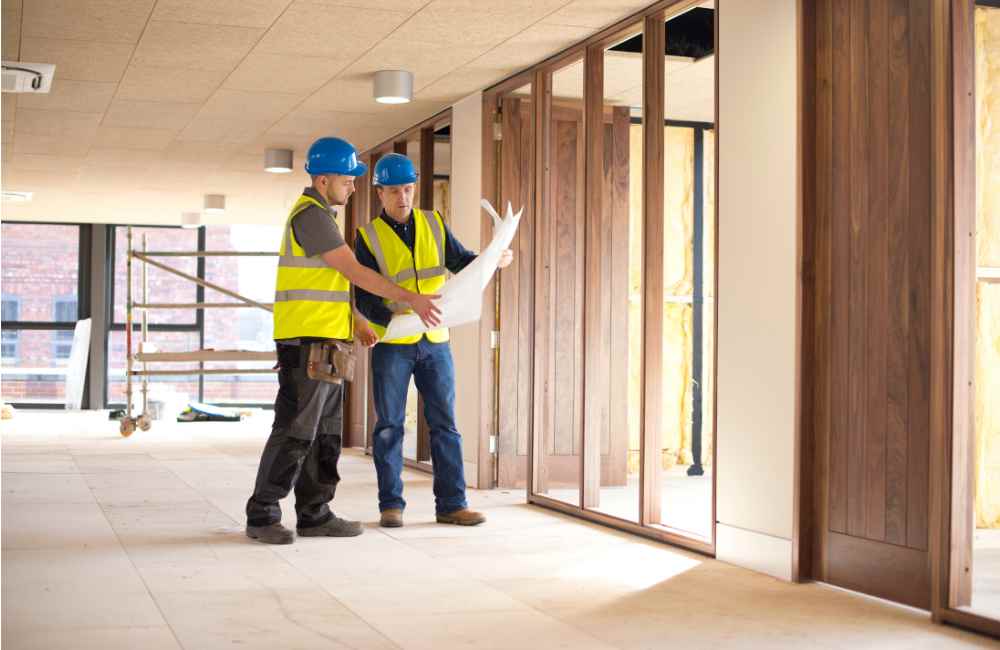Commercial development finance is a form of financing that is used to fund the costs associated with the construction, development, or renovation of commercial properties, and for house building.
Compare Development finance options from over 150 funders.
How does Development Finance work?
Unlike long-term property mortgages, development financing is usually short-term, lasting between 6 to 24 months. These loans are utilised for purchasing land and covering construction expenses. When contemplating development finance, various factors should be considered.
Need help? Call us on 0191 410 4776
Loan to Gross Development Value (LTGDV)
In property development finance, the borrowing limit is determined by the anticipated value of the asset (property or land) after the project’s completion, known as the Gross Development Value (GDV).
Typically, lenders in property finance aim for the project costs to not exceed 75% of the GDV.
Loan to Cost
Loan to Cost (LTC) refers to the sum a bridging lender offers as a loan in relation to the entire project cost. In some cases, this could reach up to 100%.
Day 1 Loan Funding Limit
Lenders will disburse funds gradually as the project advances. The initial amount needed on day 1 to kickstart the project will be evaluated. Typically, lenders are willing to provide 65-70% of the total on the first day.
Lenders evaluate the loan amount using the mentioned criteria to determine a final combined sum. Additional factors taken into account are geography, type of asset, lender’s exposure to loans, development skills, and construction type.
Before finalising the development loan, lenders usually require a pre-let or pre-sale of the asset, leading to the need for contract exchange.
If you plan to keep the property for rental after completion, providing proof of a long-term commercial mortgage can be key for repaying the development loan.
Benefits of Development finance
Quick Access
Development finance can be repaid promptly, leading to minimal overall borrowing expenses. It is more cost-effective compared to various long-term borrowing options. Interest is solely applied to the funds that are utilized, resulting in a positive effect on the facility’s total costs.
Short Repayment Periods
Development finance loans usually range from six to 24 months, ensuring that you are not tied down by long repayment terms.
Roll up interest
In development finance, regular monthly repayments are typically not required. Instead, the interest accumulates, and you settle the total capital and interest in one payment at the end of the term.
Ambitious projects
Access to development finance enables you to explore more ambitious development projects than you would typically undertake. It also facilitates the ability to manage multiple development projects concurrently.
Development finance can be utilized for newly constructed properties, residential properties, commercial spaces, and semi-commercial properties.
Types of Development Finance
Development finance is very flexible and can be secured against a wide variety of projects. These include:
Ground Up Development
This is the biggest type of project which involves starting from scratch on a plot of land or demolishing an existing building.
Permitted Development
Certain projects can be carried out by developers without requiring full planning permission. These typically include extensions, building outbuildings, renovations, home improvements, occasional changes in use, and recently, conversions from office to residential spaces.
Refurbishment
Developers seek to enhance a property, categorized by lenders as ‘light’ and ‘heavy’ refurbishment, although interpretations may vary.
- Light Refurbishment: No planning required. Tasks include rewiring, installing new windows, decorating, or renovating a bathroom or kitchen, without structural alterations.
- Heavy Refurbishment: Involves structural changes like extensions or conversions, typically requiring planning permission and/or adherence to building regulations.
Land Financing
Land financing involves funding for a piece of land, usually without planning permission. Fewer lenders provide such products due to the higher risk associated with the possibility of the project not obtaining consent. Interest rates usually mirror this elevated risk, and the Loan To Value (LTV) can be up to 50%.
Pre-Construction
This phase is commonly applied when there is a preliminary plan that may need adjustments or improvements, or any other additional value before the project officially begins.
How is commercial development finance different from bridging finance?
There is often confusion between bridging loans and property development loans. While these two products share similarities, they serve different purposes. Here are some common features that contribute to the confusion:
- Both are short-term financial products.
- They are backed by property or land.
- Monthly payments are typically not required.
- Repayment is commonly made through the sale or refinancing of the secured property or land.
Bridging loans are commonly utilised for time-sensitive property transactions or to address short-term financial requirements. They can serve various purposes, including:
- Purchasing a property before selling the current one.
- Supporting property renovation or conversion projects.
- Financing auction acquisitions.
- Backing a property during the sales process.
Development finance is utilised for property development projects, ground-up schemes where properties are built from the beginning, refurbishment, and preconstruction.
How does the funds release process vary?
Bridging loan funds are usually released at once, which is typical for auction purchases and funding property purchases before selling an existing property.
Development finance tends to be released in stages. Initially, a loan is granted based on the site’s value, with additional funds released as construction progresses.
Securing your development finance agreement
Once you’ve decided on the project you want to undertake, get in touch and our expert advisors will work with you to establish with you to find the perfect development finance terms at Anglo Scottish has never been easier. We work with a hugely varied portfolio of over 70 funders, ensuring we can find the right terms to suit your business.
Contact us
Our expert team of advisors are on hand to provide advice and guidance and help talk you through your options regarding vehicle hire.
Need help? Call us on 0191 410 4776
